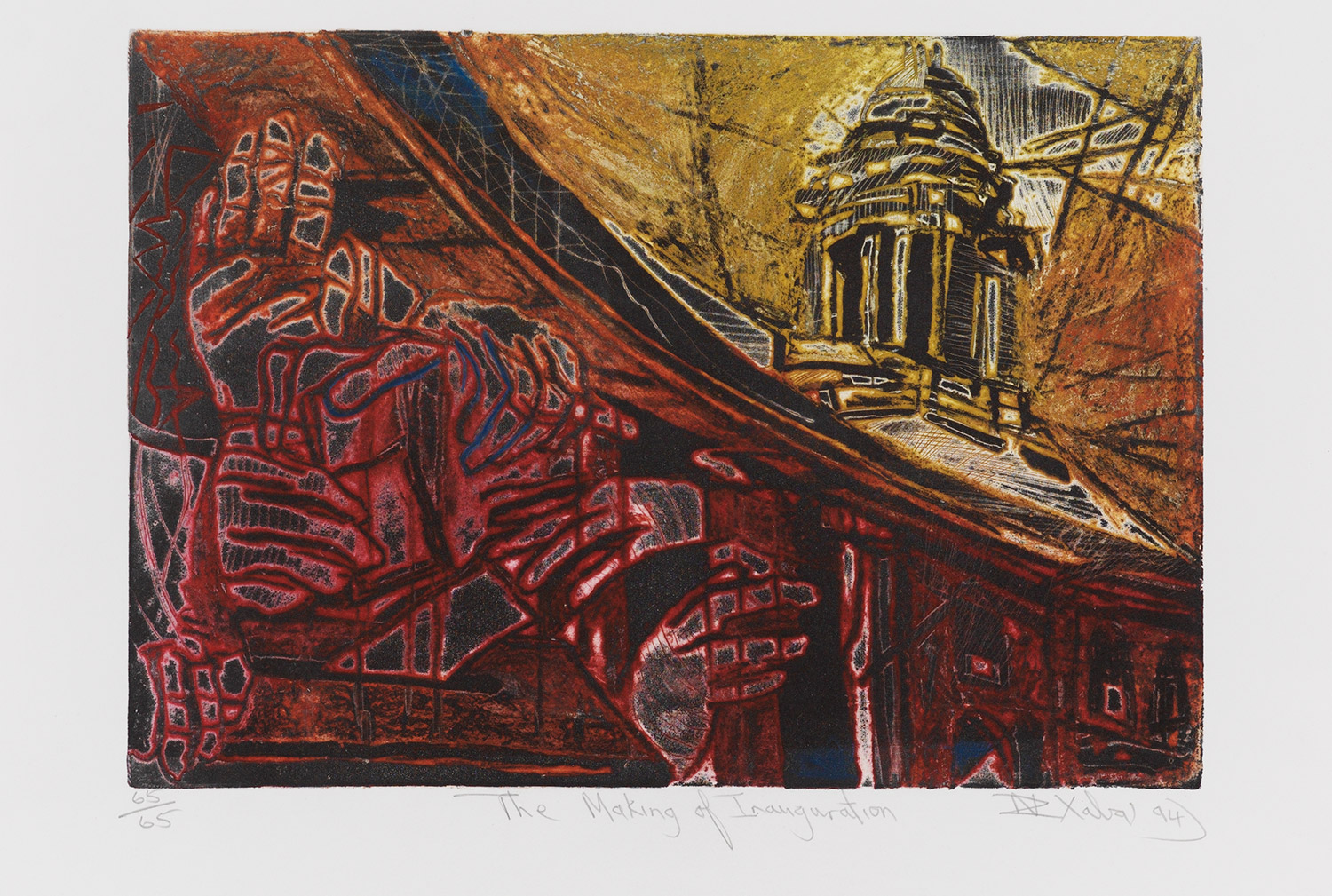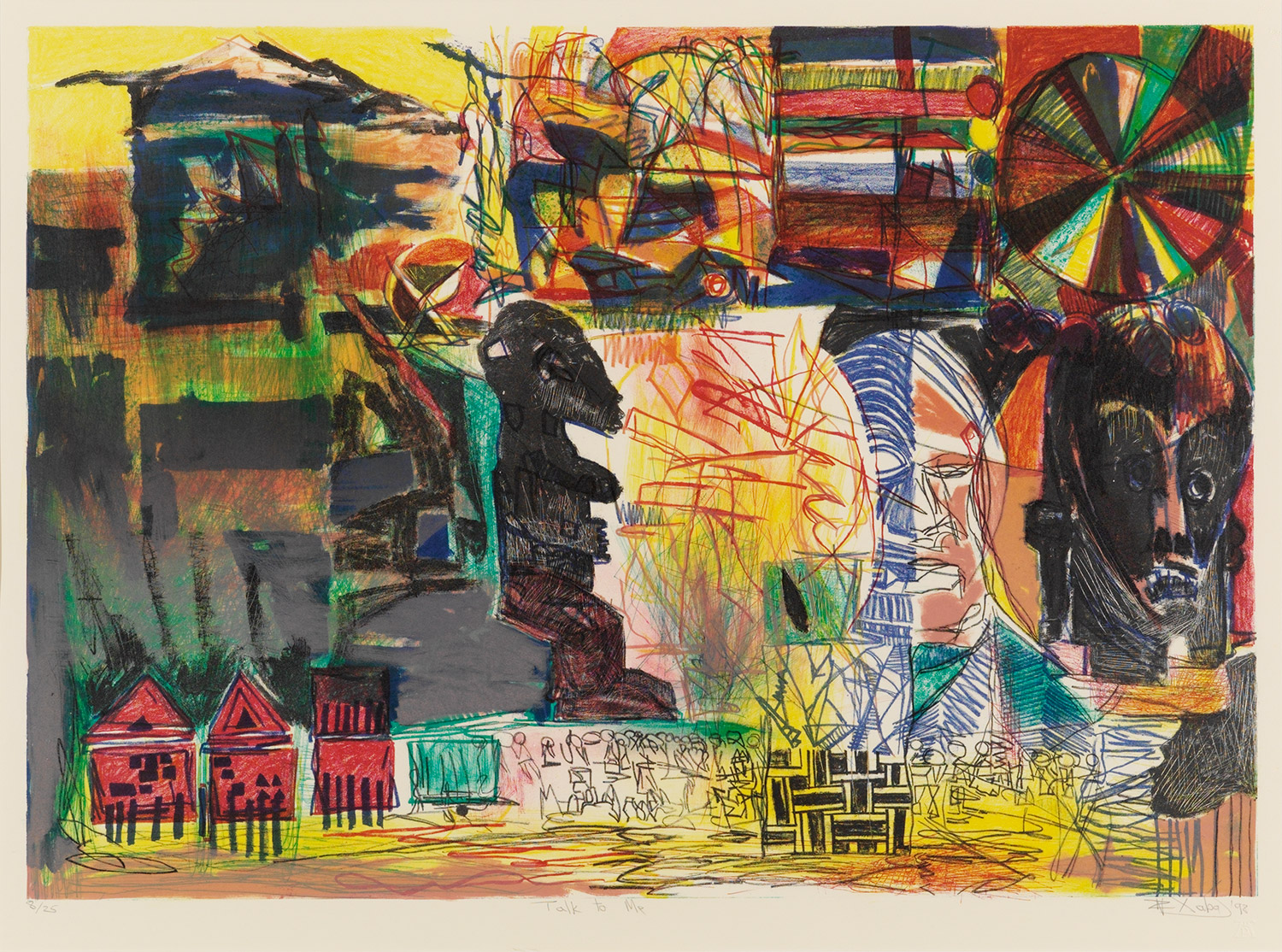Nhlanhla XABA (1960 – 2003)
BIOGRAPHY
Nhlanhla Xaba was born in Payneville, Springs. He worked as a labourer at Jabula Milling Company until he was able to raise enough money to return to high school and pursue his studies. He matriculated in 1981.
During his high school years he was taught by Madi Phala, who became his first mentor in art. Working alongside Phala, Xaba began to produce and exhibit work.
In 1981 he decided to go to Rorke’s Drift, the now legendary missionary arts and craft centre in KwaZulu-Natal, but unfortunately, that was the year in which the centre closed down. Disillusioned, Phala returned to working as a labourer in Gauteng — this time at an egg container manufacturing company.
At the beginning of 1985, he went back to KwaZulu Natal, to the Mangosuthu Technikon where he spent a year studying Architectural Drafting, but could not proceed due to a lack of funds.
The desire to further his artistic endeavours led him to the African Institute of Art at the Funda Centre in Diepkloof, Soweto in 1986, where a new chapter in his life began. Through the African Institute of Art, he enrolled for a BAFA at the University of South Africa (Unisa), studied Child Art Education between 1987 and 1989, compiling a textbook for teaching children’s art, called Khula Udweba.
From 1987 to 1990, he taught art on a part-time basis at the Open School, Pimville; the Alexandra Art Centre; the Independent Visual Art & Craft Academy, Germiston; and the Othandweni Orphanage. He also served as a part-time lecturer at the Federated Union of Black Artists.
Opportunities opened up and Xaba participated in numerous local and international exhibitions. He worked with Matsemela Manaka as an assistant curator in founding the Soweto Neighbourhood Museum between 1991 and 1992.
‘In my art I attempt to convey a painter’s struggle,’ he once stated. ‘I am concerned with shifting boundaries mental and physical. On the canvas and in life, these boundaries, are continuously shifting and are complex, centred around the economics and politics of place and time, also geography and physical space.’
In 1993, together with Kim Berman, Xaba founded Artist Proof Studios, where he worked as a teacher, mentor and inspiration to many young artists.
He was awarded Standard Bank Young Artist in 1998.
In November 2002, working in collaboration with Mark Attwood at the Artists’ Press, he completed the plates for the last lithographs he was to make.
On 9 March 2003, Xaba died tragically in a fire that razed the Artists Proof Studios. He had reportedly taken to sleeping at the studio occasionally. At the time of his death, he was working on an exhibition that was due to open that June. All of his work for the exhibition, as well as all other artwork at the studio, was destroyed in the fire.
In honour of his memory, the Artists’ Press decided to publish the lithographs he’d made just months before as unsigned editions. The artist’s proofs were given to his three children, and profits from the sale of the prints went to the Nhlanhla Xaba Family Trust.
Xaba participated in close to 30 group exhibitions and held four important solo exhibitions: at the Luca Gansser Studio, Lugano, Switzerland (1990); at the Berman Gallery, Johannesburg (1992); at the National Arts Festival, Grahamstown (now Makhanda) (1998); and at Art on Paper Gallery (2004). His prints were included in numerous portfolios, mainly those creating awareness about Human Rights and about HIV/AIDS.



